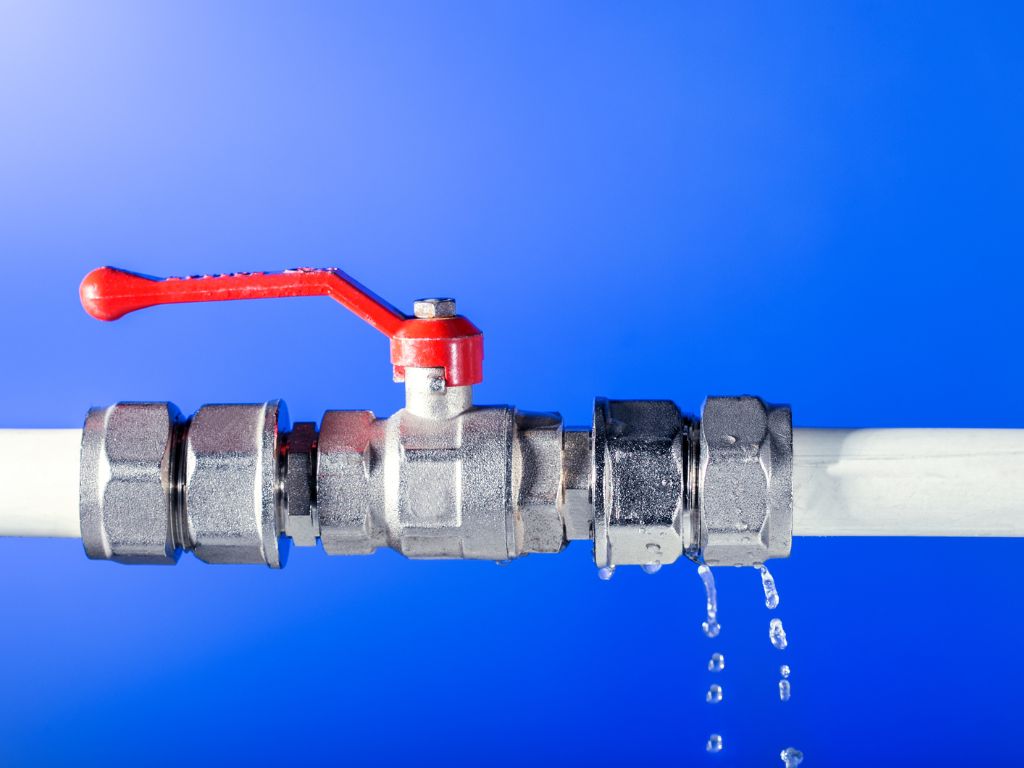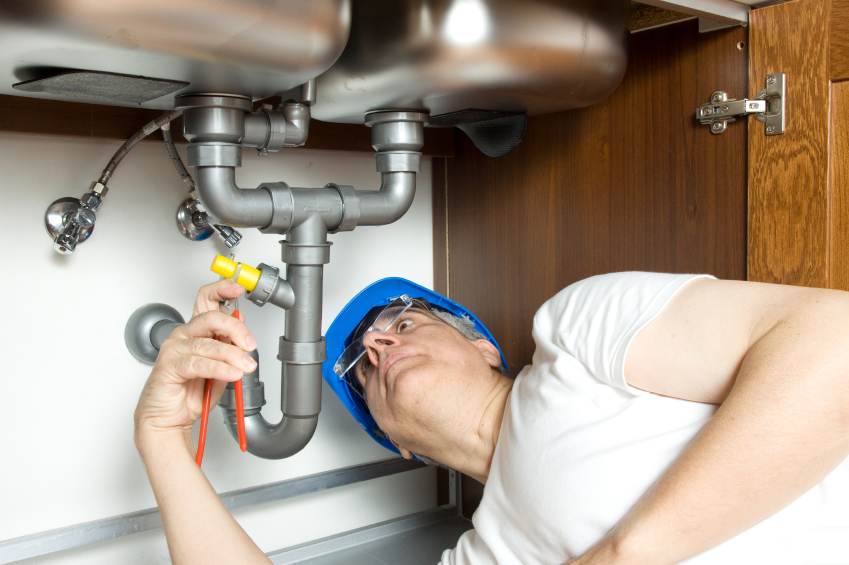The publisher is making several good points about Expert Tips for Emergency Plumbing Repairs in general in this article down below.

Plumbing emergencies can strike at any time, triggering anxiety and possible damages to your home. Whether it's a ruptured pipeline, a clogged drainpipe, or a dripping faucet, knowing how to manage the circumstance up until an expert plumbing technician shows up can conserve you from more issues. This article provides important emergency plumbing suggestions to assist you reduce damage and restore control during a plumbing crisis.
Turn Off the Water Supply
The initial step in any pipes emergency situation is to shut down the water. For local problems, such as a leaking faucet or toilet, turn off the shutoff near the component. When it comes to a significant leak or burst pipe, locate your home's major water shut-off shutoff and transform it off promptly. Understanding the place of these valves beforehand can conserve useful time throughout an emergency.
Shut Off Your Hot Water Heater
In particular emergency situations, such as a ruptured pipeline, it's smart to shut down your hot water heater. This avoids overheating or damages to the system when water stops flowing. Switch off the power supply to the hot water heater (electric or gas) and allow it cool to prevent potential threats.
Momentarily Stop a Burst Pipeline
A burst pipe can bring about considerable water damage in mins. To mitigate the concern:
- Clamp or Wrap the Pipeline: Utilize a pipe clamp, rubber, or air duct tape as a short-term seal.
- Divert Water Circulation: Preferably, draw away the water right into a bucket or container to limit damage to bordering areas.
- Maintain the Area Dry: Use towels or a wet/dry vacuum cleaner to remove standing water.
- Call a specialist plumbing technician instantly to deal with the problem permanently.
Have an Emergency Situation Plumbing Package
Prepare a fundamental pipes emergency kit to manage minor concerns effectively. Your package must include:
- Flexible wrench
- Plumber's tape
- Pipeline clamps
- Towels and cloths
- A plunger
- Epoxy putty
- Container.
- Having these devices available can make a substantial distinction in your capability to take care of emergency situations.
Unclog Drains Securely.
A clogged drainpipe can be an aggravating and untidy concern. Here's just how to tackle it:. - Use a Bettor: For sinks or commodes, a plunger can commonly dislodge small clogs. Ensure you make use of the correct kind of bettor for the fixture.
- Hot Water and Meal Soap: For grease-related obstructions, pour a combination of hot water and meal soap away to break up the oil.
- Avoid Chemical Drainpipe Cleaners: While appealing, chemical cleansers can cause more damage than excellent, especially to older pipes.
- If these approaches do not work, prevent making use of too much force, as it may intensify the blockage.
Handle Overflowing Toilets.
An overruning commode can cause immediate turmoil. Below's what you need to do:. - Stop the Water Flow: Eliminate the storage tank cover and weigh down on the flapper valve to stop water from going into the dish. Switch off the water to the commode if necessary.
- Plunge Delicately: Make use of a toilet plunger to get rid of the clog, yet stay clear of hostile plunging, which can create spilling or additional damage.
- Include the Spill: Usage towels or a mop to tidy up water rapidly to stop flooring damages.
Address Tiny Leaks with Momentary Solutions.
Small leaks can quickly come to be significant issues if left untreated. Make use of these temporary repairs till specialist aid gets here:.
- Pipeline Tape or Epoxy Putty: Use water-proof tape or epoxy putty to temporarily seal the leak.
- Rubber and Clamp Method: Cover an item of rubber or an old internal tube around the leakage and protect it with a pipe clamp or air duct tape.
- Containers or Towels: Location buckets under the leak to contain water and prevent damage to floor covering or furnishings.
- While these repairs aren't long-term, they can help minimize water loss and damages.
Deal With Frozen Pipeline Thoroughly.
In colder climates, frozen pipes are an usual emergency situation. If you presume a frozen pipe:. - Turn Off the Water: Shut down the primary water system to prevent a burst pipeline.
- Defrost Slowly: Use a hairdryer, hot pad, or cozy towels to thaw the pipe gradually. Stay clear of open fires or severe warmth, as these can damage the pipe.
- Evaluate for Leaks: Once the pipe is defrosted, check for cracks or leakages prior to turning the water back on.
Know When to Call a Professional.
While quick fixes can aid briefly, certain pipes problems require immediate specialist interest. Call a plumbing if:.
- A ruptured pipe causes considerable flooding.
- Drains pipes or bathrooms remain clogged in spite of your initiatives.
- You observe persistent leakages or water pressure concerns.
- Your hot water heater is leaking or malfunctioning.
- Without delay getting in touch with a professional makes sure the issue is resolved properly and protects against additional complications.
Stop Further Damages.
Taking quick activity to lessen damages can save you money and time over time. Below's how:. - Move Valuables: Get rid of furniture, electronic devices, and other things from the affected location.
- Use Sandbags: For flooding situations, place sandbags around the area to reroute water.
- Turn off Power: If water has gotten to electrical outlets or home appliances, turn off the power to prevent shocks or fires.
Verdict.
Plumbing emergencies can be frustrating, but with the ideal expertise and devices, you can manage the circumstance properly until assistance gets here. By turning off the water system, addressing small leaks, and making use of temporary repairs, you can lessen damages and keep your home safe. Keep in mind, these ideas are short-lived services; always get in touch with a qualified plumbing professional to handle the source of the issue. Prep work and quick thinking are your finest allies in any type of pipes emergency situation.
Top Tips for Emergency Plumbing Leak Repairs
Identifying the Leak Source
To properly address a plumbing leak, begin by locating the source using a flashlight and inspecting visible pipes for any signs of water accumulation or dripping. Look for water stains, mold growth, or musty odors which can indicate hidden leaks. Follow the water trail to pinpoint the origin of the leak. Check under sinks, around appliances, and near water heaters as these are common areas for leaks to occur.
If the leak is coming from a visible pipe joint, tightening the connection may solve the issue. Use a wrench to secure the joint without over-tightening, which could cause damage. For small cracks or holes, a temporary fix can be applied using epoxy putty or a pipe clamp until a permanent solution is implemented.
Remember to turn off the water supply before attempting any repairs to prevent further damage. Once the leak is identified, take necessary steps to either fix it yourself or contact a professional plumber for assistance.
Shutting Off the Water Supply
Before initiating any plumbing repairs, make sure you shut off the water supply to prevent further leakage. Locate the main shut-off valve for your property. This valve is typically found near the water meter or where the main water line enters your home. Turn the valve clockwise to shut off the water flow. If you’re dealing with a localized leak, like a sink or toilet, you can also shut off the water supply to that specific fixture by using the individual shut-off valves located underneath or behind the fixture.
Shutting off the water supply is essential to prevent more water from entering the system and causing additional damage. By taking this initial step, you can minimize the extent of the leak and prevent potential flooding in your home. Remember to inform everyone in the household about the water shut-off location in case of future emergencies. Once the water is off, you can proceed with identifying and addressing the leak source to resolve the issue effectively.
Temporary Leak Containment
If you’ve successfully shut off the water supply, the next step is to contain the leak temporarily to prevent further damage. Start by locating the source of the leak. Check for any visible cracks, holes, or burst pipes. Once identified, use materials like duct tape, pipe clamps, or rubber patches to cover the damaged area. For smaller leaks, a bucket or container can be placed underneath to catch dripping water.
If the leak is coming from a pipe joint, tightening the connection with a wrench might help reduce the leakage temporarily. Remember, these are just temporary solutions to prevent immediate damage. It’s essential to contact a professional plumber to assess and fix the issue permanently.
While containing the leak, keep an eye on the affected area for any signs of worsening. If the leak worsens or you’re unable to contain it effectively, don’t hesitate to contact emergency plumbing services for immediate assistance. Taking quick action to contain the leak can help minimize water damage and save you from costly repairs in the long run.
Contacting Emergency Plumbing Services
When facing a plumbing emergency, promptly reach out to professional plumbing services for immediate assistance. Contacting emergency plumbing services is essential to prevent further damage to your property. These professionals have the expertise and tools to address the issue quickly and effectively. When you call for emergency plumbing services, provide as much detail as possible about the leak, its location, and any steps you have taken to contain it. This information will help the plumbers assess the situation and come prepared to tackle the problem.
Ensure that you have the contact information for emergency plumbing services readily available, so you can act swiftly in case of a leak. Many plumbing companies offer 24/7 emergency services, so don’t hesitate to reach out, even if the leak occurs outside regular business hours. By contacting professional plumbers promptly, you can mitigate the damage caused by the leak and restore the functionality of your plumbing system efficiently.
Post-Repair Leak Prevention
To prevent future leaks after repairs, conduct a thorough inspection of all plumbing connections. Start by checking for any signs of corrosion, rust, or wear on pipes, fittings, and fixtures. Tighten any loose connections and replace any damaged parts to guarantee a secure fit. Additionally, inspect the seals around toilets, sinks, and tubs to make sure they’re intact and not deteriorating.
Consider installing water leak detectors in key areas of your home, such as near water heaters, under sinks, and around appliances like washing machines and dishwashers. These detectors can alert you to leaks early on, helping you address them before they cause significant damage.
Regularly monitor your water bill for any unexpected spikes, as this could indicate a hidden leak. If you notice a sudden increase in water usage without a corresponding change in your habits, it’s crucial to investigate the issue promptly.
https://callprofessorplumb.com/articles/top-tips-for-emergency-plumbing-leak-repairs/

I'm very excited about Expert Tips for Managing a Plumbing Emergency Until Help Arrives and I hope you enjoyed the new piece. I beg you take the opportunity to distribute this write-up if you appreciated it. Thanks a bunch for being here. Come back soon.
Detail
Comments on “Emergency Plumbing Tips: Steps to Manage Issues Until Support Arrives”